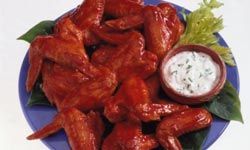Going out to eat is not easy on the wallet, so a $5.99 all-you-can-eat spaghetti buffet seems like a good deal. But, is a pasta dinner for four, something you make at home, really worth $25? Not unless it's imported direct from Italy. Surprisingly, the steak dinner that would cost your group more than $100 might actually be a better deal.
According to Forbes magazine, a fine-dining restaurant's average cost of raw food is around 38 to 42 percent of menu price, but only 5 to 8 cents of every dollar goes to the restaurateur. The rest is swallowed up in overhead, payroll and food costs.
Advertisement
So, restaurants want to maximize revenue. To do this, they balance high-profit dishes like pasta or chicken (that cost less to buy and serve) against high-cost like seafood or beef, where the markup will be less. Certain industry practices help too. For example, a menu consultant might advise showcasing high profit dishes in the menu's top right-hand top corner and including a price anchor -- that extremely over-priced item that makes everything else look inexpensive. A daily special is another way to promote preferred items, and who doesn't want something special? Creative ideas, such as having patrons wait in the bar where they may order a drink or advertising an all-you-can-eat brunch buffet also help a restaurant's bottom line.
Since your average restaurant can only charge so much for an entrée, without losing business, it has to make up the difference on other parts of the meal. So, what specific items make restaurants the most money? Keep reading to learn about some popular budget busters on menus. The first one has a markup of more than 900 percent.



